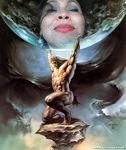CRR ´s Using The Apostrophe
The apostrophe has three uses:
1) to form possessives of nouns.2) to show the omission of letters(contractions)
Apostrophes are NOT used for possessive pronouns or for noun plurals, including acronyms.
Forming possessives of nouns
To see if you need to make a possessive, turn the phrase around and make it an "of the..." phrase. For example:
the boy's hat = the hat of the boy
three days' journey = journey of three days
If the noun after "of" is a building, an object, or a piece of furniture, then no apostrophe is needed!
room of the hotel = hotel room
door of the car = car door
leg of the table = table leg
Once you've determined whether you need to make a possessive, follow these rules to create one.
• add 's to the singular form of the word (even if it ends in -s):
the owner's car
James's hat
• add 's to the plural forms that do not end in -s:
the children's game
the geese's honking
• add ' to the end of plural nouns that end in -s:
houses' roofs
three friends' letters
• add 's to the end of compound words:
my brother-in-law's money
• add 's to the last noun to show joint possession of an object:
Todd and Anne's apartment
Showing omission of letters
Apostrophes are used in contractions. A contraction is a word (or set of numbers) in which one or more letters (or numbers) have been omitted. The apostrophe shows this omission. Contractions are common in speaking and in informal writing. To use an apostrophe to create a contraction, place an apostrophe where the omitted letter(s) would go. Here are some examples:
don't = do not
I'm = I am
he'll = he will
who's = who is
shouldn't = should not
didn't = did not
could've= could have (NOT "could of"!)
'60 = 1960
Forming Possessives
Showing possession in English is a relatively easy matter (believe it or not). By adding an apostrophe and an s we can manage to transform most singular nouns into their possessive form:
· the car's front seat
· Charles's car
· Bartkowski's book
· a hard day's work
Some writers will say that the -s after Charles' is not necessary and that adding only the apostrophe (Charles' car) will suffice to show possession. Consistency is the key here: if you choose not to add the -s after a noun that already ends in s, do so consistently throughout your text. You will find that some nouns, especially proper nouns, especially when there are other -s and -z sounds involved, turn into clumsy beasts when you add another s: "That's old Mrs. Chambers's estate." In that case, you're better off with "Mrs. Chambers' estate."
There is another way around this problem of klunky possessives: using the "of phrase" to show possession. For instance, we would probably say the "constitution of Illinois," as opposed to "Illinois' (or Illinois's ??) constitution."
When we want the possessive of a pluralized family name, we pluralize first and then simply make the name possessive with the use of an apostrophe. Thus, we might travel in the Smiths' car when we visit the Joneses (members of the Jones family) at the Joneses' home. When the last name ends in a hard "z" sound, we usually don't add an "s" or the "-es" and simply add the apostrophe: "the Chambers' new baby."
Many writers consider it bad form to use apostrophe -s possessives with pieces of furniture and buildings or inanimate objects in general. Instead of "the desk's edge" (according to many authorities), we should write "the edge of the desk" and instead of "the hotel's windows" we should write "the windows of the hotel." In fact, we would probably avoid the possessive altogether and use the noun as an attributive: "the hotel windows." This rule (if, in fact, it is one) is no longer universally endorsed. We would not say "the radio of that car" instead of "that car's radio" (or the "car radio") and we would not write "the desire of my heart" instead of "my heart's desire." Writing "the edge of the ski" would probably be an improvement over "the ski's edge," however. For expressions of time and measurement, the possessive is shown with an apostrophe -s: "one dollar's worth," "two dollars' worth," "a hard day's night," "two years' experience," "an evening's entertainment," and "two weeks' notice" (the title of the Hollywood movie nothwithstanding).
Possessives of Plurals & Irregular Plurals
Most plural nouns already end in s. To create their possessive, simply add an apostrophe after the s:
· The Pepins' house is the big blue one on the corner.
· The lions' usual source of water has dried up.
· The gases' odors mixed and became nauseating.
· The witches' brooms were hidden in the corner.
· The babies' beds were all in a row.
With nouns whose plurals are irregular, however, you will need to add an apostrophe followed by an s to create the possessive form.
· She plans on opening a women's clothing boutique.
· Children's programming is not a high priority.
· The geese's food supply was endangered.
(But with words that do not change their form when pluralized, you will have to add an -s or -es.)
· The seaweed was destroyed by the fishes' overfeeding.
Holidays Showing Possession
A number of American Holidays have possessive forms, and are peculiarly inconsistent. "Mother's Day" and "Father's Day" are easy enough, one parent at a time, and "Parents' Day" is nicely pluraiized, as is "Presidents' Day" which celebrates the birthdays of both Washington and Lincoln. "All Souls' Day (Halloween)," of course, takes a plural possessive. "Veterans Day" is plural but not possessive, for historical reasons shrouded in mystery. Martin Luther King Jr. Day has no possessive. "New Year's Day," "St. Valentine's Day," St. Patrick's Day," and "April Fool's Day" all have their singular possessive form, and so, while we're at it, does "Season's Greetings." Note that "Daylight Saving Time" is neither possessive nor plural.
Compound Possessives
When you are showing possession with compounded nouns, the apostrophe's placement depends on whether the nouns are acting separately or together.
· Miguel's and Cecilia's new cars are in the parking lot. This means that each of them has at least one new car and that their ownership is a separate matter.
· Miguel and Cecilia's new cars are in the parking lot.This construction tells us that Miguel and Cecilia share ownership of these cars. The possessive (indicated by 's) belongs to the entire phrase, not just to Cecilia.
Another example:
· Lewis and Clark's expectations were very much the same. This construction tells us that the two gentlemen held one set of expectations in common.
· Lewis's and Clark's expectations were altogether different.This means that the expectations of the two men were different (rather obvious from what the sentence says, too). We signify separate ownership by writing both of the compounded proper nouns in the possessive form.
When one of the possessors in a compound possessive is a personal pronoun, we have to put both possessors in the possessive form or we end up with something silly: "Bill and my car had to be towed last night."
· Bill's and my car had to be towed last night.
· Giorgio's and her father was not around much during their childhood.
If this second sentence seems unsatisfactory, you might have to do some rewriting so you end up talking about their father, instead, or revert to using both names: "Giorgio and Isabel's father wasn't around much . . . ." (and then "Giorgio" will lose the apostrophe +s).
Possessives & Compound Constructions
This is different from the problem we confront when creating possessives with compound constructions such as daughter-in-law and friend of mine. Generally, the apostrophe -s is simply added to the end of the compound structure: my daughter-in-law's car, a friend of mine's car. If this sounds clumsy, use the "of" construction to avoid the apostrophe: the car of a friend of mine, etc. This is especially useful in pluralized compound structures: the daughters-in-law's car sounds quite strange, but it's correct. We're better off with the car of the daughters-in-law.
Possessives with Appositive Forms
When a possessive noun is followed by an appositive, a word that renames or explains that noun, the apostrophe +s is added to the appositive, not to the noun. When this happens, we drop the comma that would normally follow the appositive phrase.
· We must get Joe Bidwell, the family attorney's signature.
Create such constructions with caution, however, as you might end up writing something that looks silly:
· I wrecked my best friend, Bob's car.
You're frequently better off using the "of-genitive" form, writing something like "We must get the signature of Joe Bidwell, the family attorney" and "I wrecked the car of my best friend, Bob."
Double Possessives
Do we say "a friend of my uncle" or "a friend of my uncle's"? In spite of the fact that "a friend of my uncle's" seems to overwork the notion of possessiveness, that is usually what we say and write. The double possessive construction is sometimes called the "post-genitive" or "of followed by a possessive case or an absolute possessive pronoun" (from the Oxford English Dictionary, which likes to show off). The double possessive has been around since the fifteenth century, and is widely accepted. It's extremely helpful, for instance, in distinguishing between "a picture of my father" (in which we see the old man) and "a picture of my father's" (which he owns). Native speakers will note how much more natural it is to say "He's a fan of hers" than "he's a fan of her."
Generally, what follows the "of" in a double possessive will be definite and human, not otherwise, so we would say "a friend of my uncle's" but not "a friend of the museum's [museum, instead]." What precedes the "of" is usually indefinite (a friend, not the best friend), unless it's preceded by the demonstratives this or that, as in "this friend of my father's."
Etiquetas
martes, 25 de diciembre de 2007
Suscribirse a:
Enviar comentarios (Atom)







No hay comentarios:
Publicar un comentario